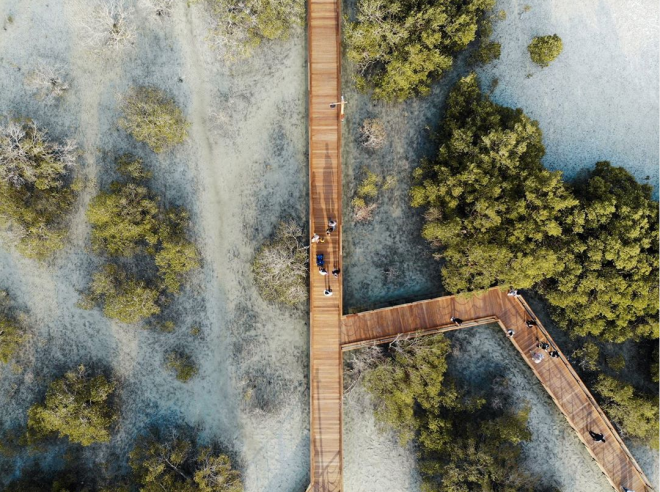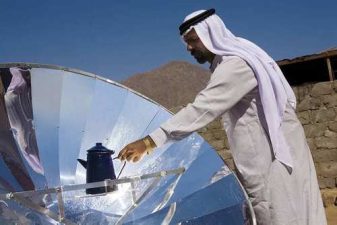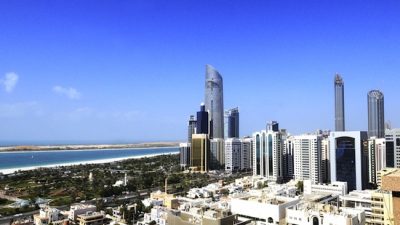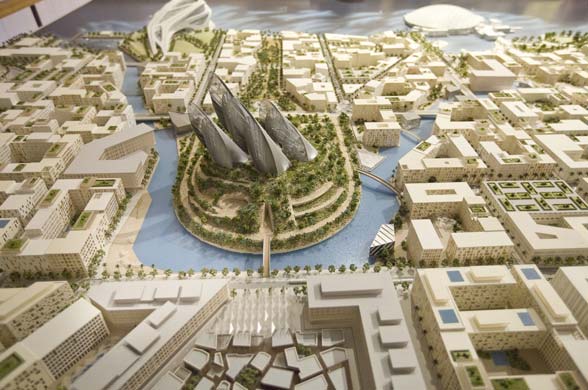
Like this Foster and Partners museum, and creations like artificial islands and Masdar. Abu Dhabi is moving at break-neck speed. New urban developments like a maker’s studio and a mangrove walk is showing how Abu Dhabians want to slow down a little and smell the finjan.
The Tenth Session of World Urban Forum, the world’s most important conference on cities convened biannually by UN Habitat has just concluded. For the first time, it took place in an Arab country, the United Arab Emirates, and the host, Abu Dhabi, had much to contribute to the conversation.
Throughout the week-long event, representatives of Abu Dhabi municipality, the UAE government and private developers took part in forums and panels where they unveiled projects that are going to transform the landscape and character of the capital. The overall trend is to make the city more pedestrian-friendly and community-based.
Abu Dhabi is located on several islands and the downtown of the city is situated on the biggest of them. The design of the city center comes from the late 1960s when car mobility was valued over walkability.
Now, the authorities aim to make the city more liveable and to do so, they focus on developing islands surrounding the downtown area. They have already done so with Saadiyat and Yas islands. While the first one became a cultural district with Louvre and New York University, the latter has been established as a globally-renowned entertainment destination. Now, the government is looking at Al Reem and Jubail islands.
Many of the projects that are going to be developed come under the umbrella of “For Abu Dhabi” initiative, which has been allocated $2.18 billion USD to improve liveability of the main cities of the emirate.
One of them will be the city’s first urban forest located on Al Reem Island. The goal is to create a self-sustaining forest with diverse fauna and flora which will let residents of the city get in touch with nature. Al Reem is well-suited for this venture as it is surrounded by a mangrove forest.
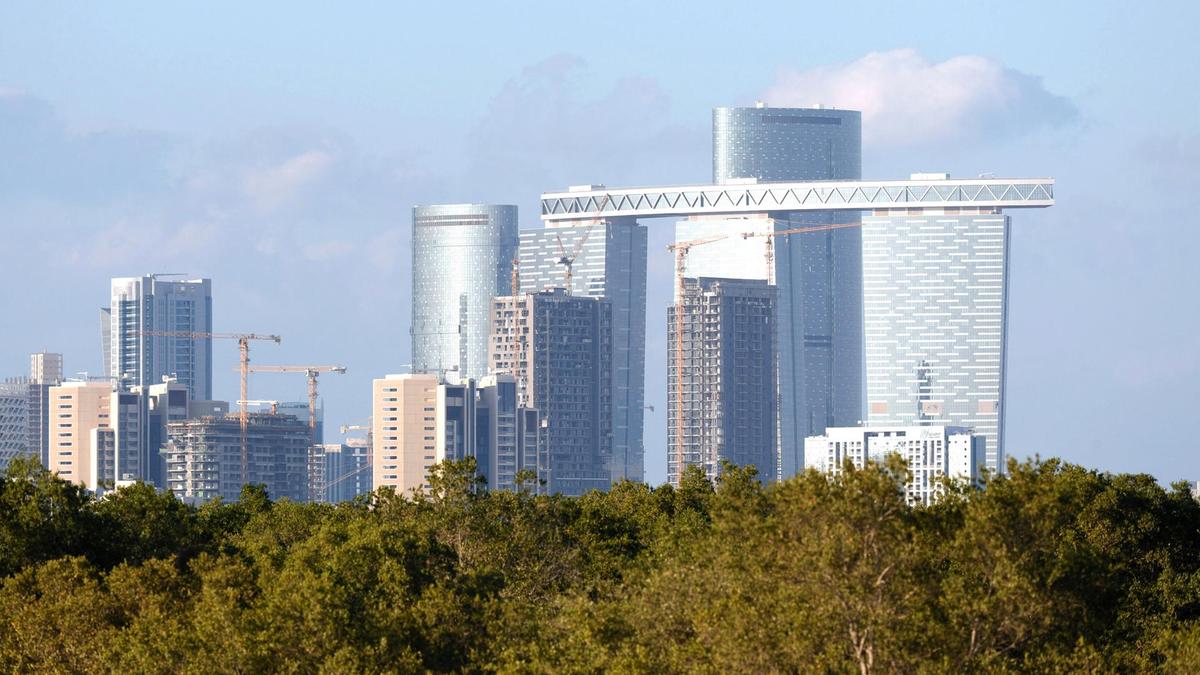
Another project underway on Al Reem is undertaken by a private developer. The Makers District is going to be the first vicinity of the capital focused on artists and creativity. The area is aimed to provide an alternative to multiple-lane roads and high-rise buildings that currently dominate Abu Dhabi. New neighbourhood will comprise of houses, shops, leisure facilities and a hotel – all with an emphasis on fostering interactions.
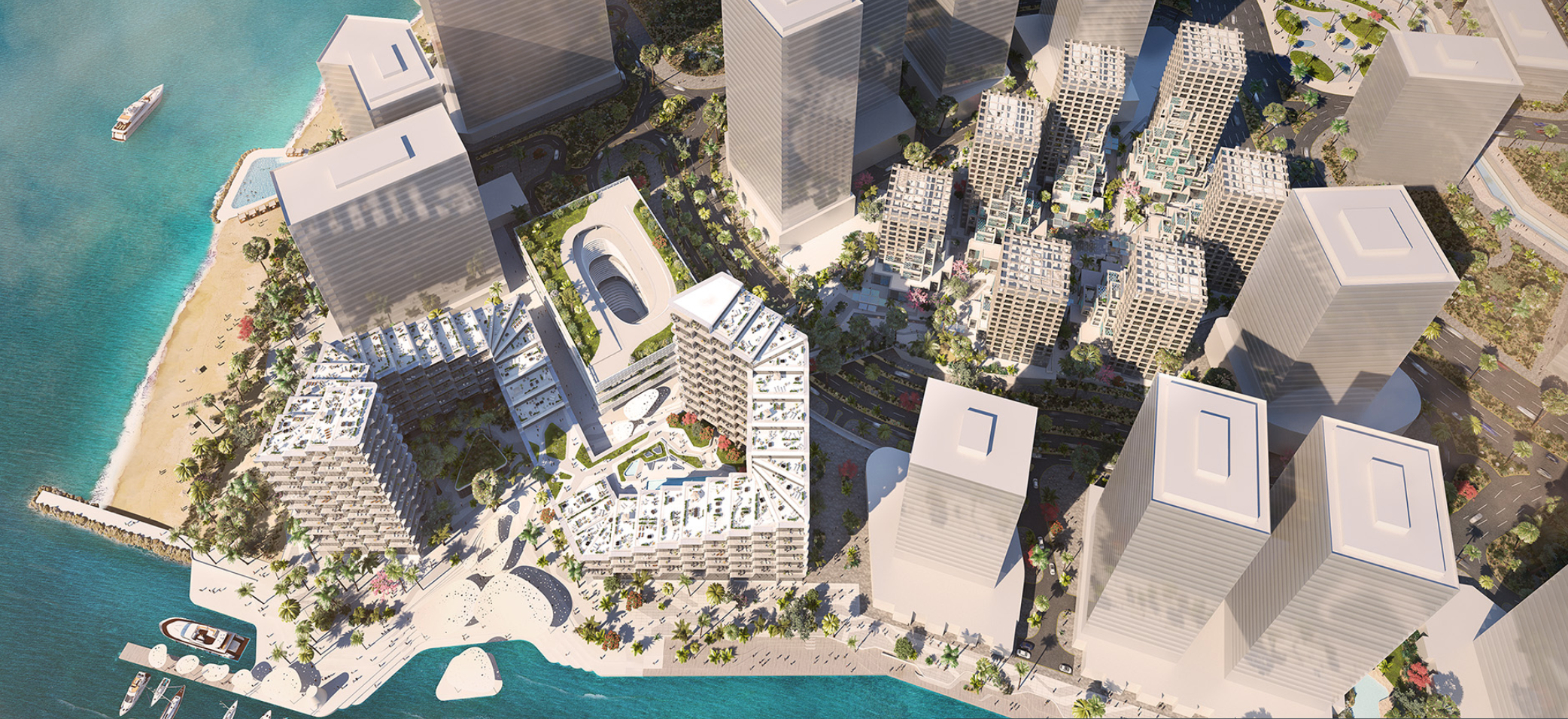
“Live different” is the motto of the new makers type village being grown in Abu Dhabi.
The second of the above-mentioned islands is Jubail – until now perhaps the most pristine part of the city. Less than a month ago, Jubail made headlines of Abu Dhabi news because of the new mangrove walk that has been opened on the island. Mangroves are unique trees growing in shallow, salty water and the ecosystem that they create is characterised by exceptionally high biodiversity.
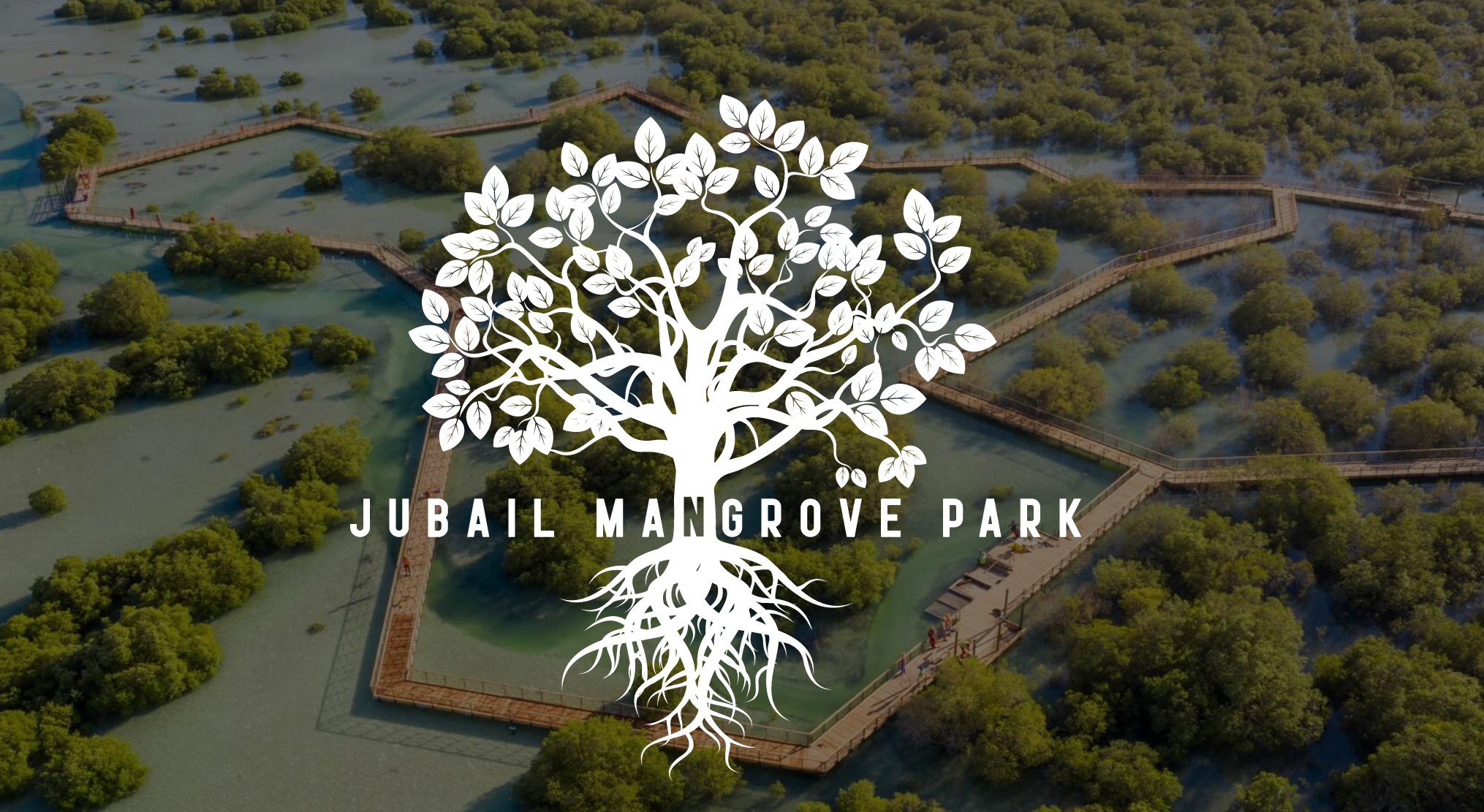
On the side note, mangroves are the most effective trees in carbon capture and sequestration. This type of forest covers more than 150 square kilometres of the UAE shoreline and it is a true gem in otherwise deserted landscape of the country.
To give the residents an opportunity to interact with picturesque mangroves on Jubail Island, a boardwalk was built and opened to the public.

In May of 2019, a newly established governmental company has unrolled a development plan for the rest of Jubail. 400 hectares of residential, retail, leisure and business areas will be smoothly integrated with the existing landscape of the island. New district will also provide residents with opportunities for nature-oriented activities like kayaking, horse-riding and so on.
All of the projects described are part of a greater vision for Abu Dhabi to become associated with environmental sustainability rather than oil economy, both in terms of local initiatives and global policy-making. In less than a year, the city hosted two high-level UN events related to climate action – the World Urban Forum and the UN Climate Meeting, a run-up event to the UN Climate Action Summit in September 2019.
Moreover, the UAE showed strong commitment to developing and implementing renewable energy during the World Energy Council Congress, the IRENA Assembly and the World Future Energy Summit which took place in Abu Dhabi in the last few months.
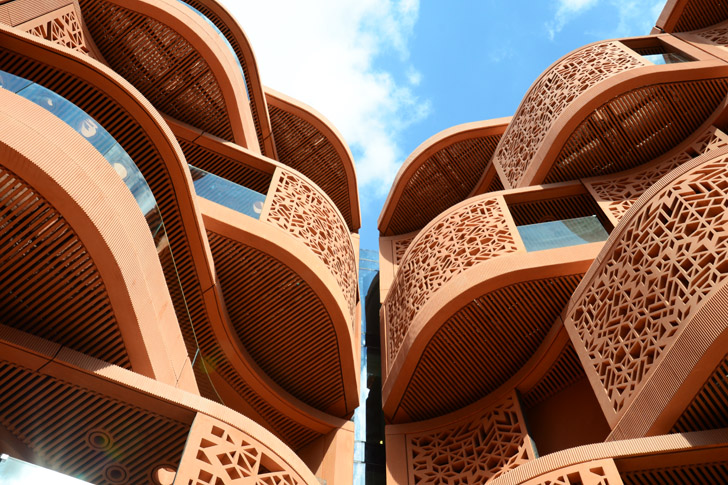
Masdar City, the failed dream for a zero-energy intentional city
While Abu Dhabi is still much less popular than Dubai for the common public, it does not need to be introduced to anyone with interest in innovation. Even though Masdar City, one of the UAE’s flagship sustainability projects, is considered to be failed, the country continues to develop solutions that are likely to become blueprints implemented in other parts of the region and the world.
